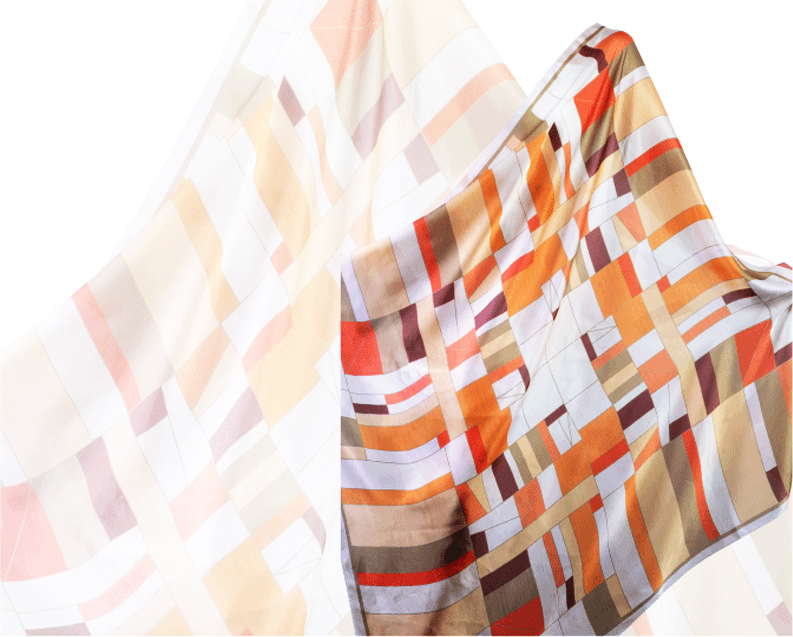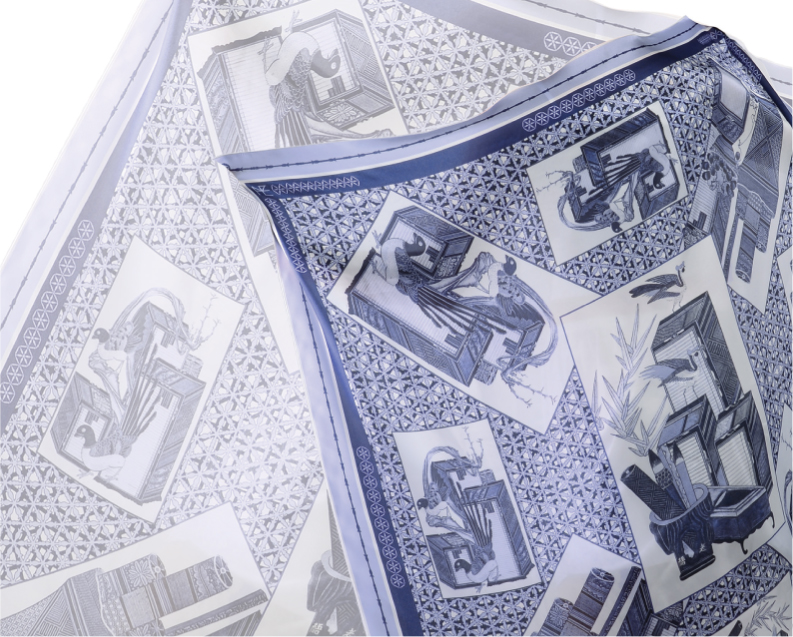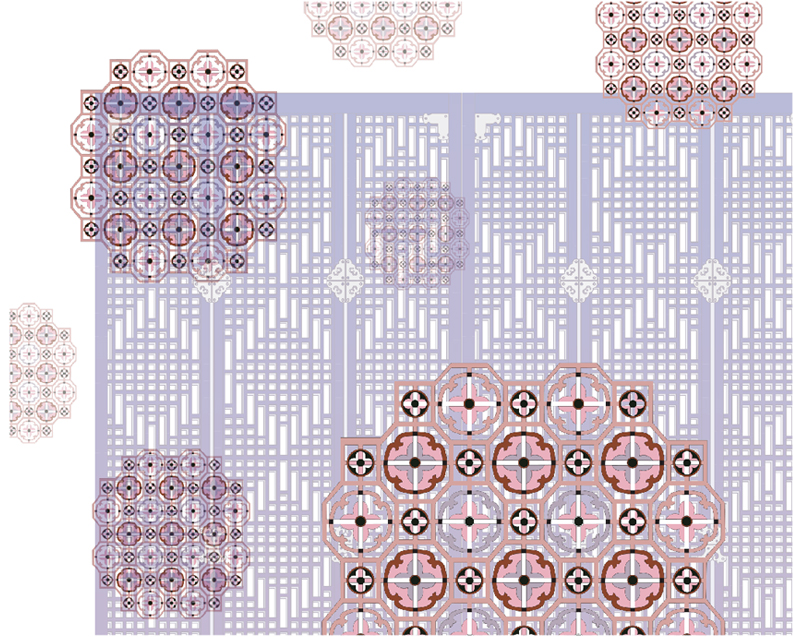DESIGN CONCEPT
'조선의 미'를 찾아서...
Looking for the beauty of the Chosun Dynasty...
Looking for the beauty of the Chosun Dynasty...
-
조 각 보
이야기 하나

이야기 하나
- 조각보
- 남은 조각의 천들을 이어 하나의 예술적 조형물로 창조된 19~20세기 초 조각보는 선조들의 검소함, 독창적인 멋과 얼을 엿볼 수 있습니다. 조각을 이어나간다는 연장 개념은 장수를 축원하는 의미 또한 담고 있습니다. 크기와 모양, 색상이 각양각색의 천조각들의 결합은 규칙성을 배제하였지만 질서보다 뛰어난 수리의 미학을 보여주며 서구의 Modern Art를 앞서가는 선조들의 민간예술의 창의성을 볼 수 있습니다.
- 1. 조각과 공간 이어가기
- 2. 조각조각 색잇기
- Story 1. Jogakbo (Korean Patchwork)
- Jogakbo from the 19th to early 20th centuries are artworks that result from patching small pieces of leftover fabric together. They reflect our ancestors’ frugal life style as well as their innovative minds and spirit. The idea of “extending” the patchwork by connecting the pieces expresses wishes and prayers for longevity. Order and regularity are missing in jogakbo because each and every piece of fabric is unique in size, shape and color; yet, it demonstrates the beauty of mathematics and shows Korean ancestors’ creativity which parallels the artistic brilliance of Modern Art in the West.
- 1. Connecting piece and space
- 2. Connecting pieces of color
-
자 수
이야기 둘

이야기 둘
- 자수
- 식물, 동물 등의 자연이나 복(福), 수(壽), 희(嬉) 자 등의 글자로 희망적인 메시지를 표현했던 한국자수는 화려하고 섬세한 섬유예술로서 조선시대 모든 계층에서 두루 즐겨했습니다. 한올한올 엮는 정성의 예술로서 여인들의 심성과 단정함, 아름다움을 생활의 숨결로 표현했습니다.
- Story 2. Embroidery
- Korean embroidery often conveyed messages of hope through images of plants and animals or through Chinese characters 福, 壽, or 嬉, which stand for blessings, life and beauty, respectively. Rich and exquisite in design, Korean embroidery was a form of textile art loved by women of all social classes. Embroidery requires much elaborate work. These art pieces, therefore, reflect the warm hearts, tidiness and beauty of women who meticulously embroidered the images.
-
민 화
이야기 셋

이야기 셋
- 민화
- 서민의 일상적인 모습을 아름다운 색채로 담아 한국의 정서와 미를 짙게 드러내는 민화는 전통회화를 모방하여 서민층에서 18세기 말부터 20세기 초에 번성하였습니다. 화초에 벌과 나비 등의 곤충을 주로 그린 초충도는 우리의 아름다운 자연의 모습을 그대로 담고 있으며, 조선시대 선비들의 생활상을 유추할 수 있는 문방사우는 서양의 입체주의 기법과 투시 원근법이 사용되어 우리의 앞선 예술성을 엿볼 수 있습니다.
- 1. 선비의 멋을 찾아
- 2. 아름다운 자연 사계
- Story 3. Folk Paintings
- Korean folk paintings strongly exhibit the Korean sentiment and beauty by colorfully illustrating the everyday sceneries of people’s lives. Folk paintings derived from imitating traditional paintings, and they prevailed between the late 18th century and the early 20th century. Paintings of grass and insects, which mainly contain images of bees and butterflies on flowering plants, embody the beautiful nature of Korea. Four Treasures of the Study (brush, ink, paper and ink stone) give us a glimpse into the lives of the Chosun Dynasty scholars. Three-dimensional techniques and the law of perspective from the West were used in Four Treasures,which demonstrate
how advanced Korean artistry was.
- 1. In search of the scholar’s essence
- 2. 4 beautiful seasons
-
문 양
이야기 넷

이야기 넷
- 문양
- 문양의 기원은 무신 풍속과 문자 및 기호의 발생과 관련이 있으며, 하나의 문화적 약속으로 사용되었습니다. 조상들이 남겨 놓은 생활 물품들의 문양을 통해 그 시대의 생활관습과 종교적 가치관을 엿볼 수 있습니다. 혜에서는 점, 선, 원, 면, 색의 구성을 질서 있는 배열로 규칙성을 갖고 있는 격자 창살 등을 주로 사용하였습니다.
- Story 4. Korean Traditional Patterns
- The origin of Korean patterns is closely related to shamanistic customs and the generation of characters and symbols. Patterns were settled as cultural symbols that carry particular meanings. The patterns on everyday objects used by the ancestors reveal customs and religious values of their time. Lattice pattern is central in HYE designs - points, lines, circles, planes, and colors are arranged according to this orderly pattern.



